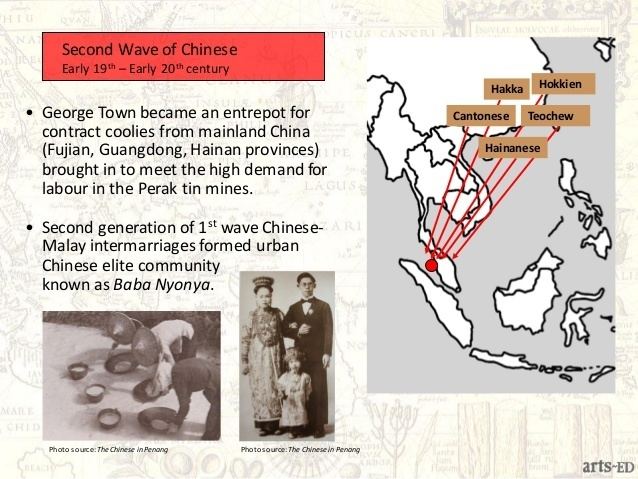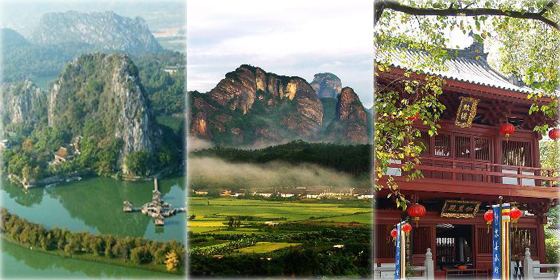Population 105 million (2011) Area 179,800 km2 Governor Zhu Xiaodan | Capital | |
 | ||
Destinations Points of interest Pearl River, Shamian Island, Chime-Long Paradise, Sun Yat-sen Memorial Hall, Baiyun Mountain | ||
Languages spoken | ||
Map of Guangdong
Guangdong (Chinese: 广东) is a province in South China, located on the South China Sea coast. Traditionally romanised as Canton or Kwangtung, Guangdong surpassed Henan and Sichuan to become the most populous province in China in January 2005, registering 79.1 million permanent residents and 31 million migrants who lived in the province for at least six months of the year; the total population was 104,303,132 in the 2010 census, accounting for 7.79 percent of Mainland China's population. The provincial capital Guangzhou and economic hub Shenzhen are among the most populous and important cities in China. The population increase since the census has been modest, the province at 2015 had 108,500,000 people.
Contents
- Map of Guangdong
- Guangdongs danxia mountains
- Taste of china guangdong food
- Name
- History
- Geography
- Economy
- Economic and technological development zones
- Demographics
- Religion
- Politics
- Relations with Hong Kong and Macau
- Media
- Culture
- National
- Provincial
- Sports
- Tourism
- Administrative divisions
- Metropolitan areas
- References

Since 1989, Guangdong has topped the total GDP rankings among all provincial-level divisions, with Jiangsu and Shandong second and third in rank. According to state statistics, Guangdong's GDP in 2014 reached RMB 6,779 billion, or US$1.104 trillion, making its economy roughly the same size as Mexico. Since 2011, Guangdong has had the highest GDP among all provinces of Mainland China. The province contributes approximately 12% of the PRC's national economic output, and is home to the production facilities and offices of a wide-ranging set of Chinese and foreign corporations. Guangdong also hosts the largest import and export fair in China, the Canton Fair, hosted in the provincial capital of Guangzhou.

Guangdongs danxia mountains
Taste of china guangdong food
Name

"Guǎng" (simplified Chinese: 广; traditional Chinese: 廣) means "expanse" or "vast", and has been associated with the region since the creation of Guang Prefecture in AD 226. "Guangdong" and neighbouring Guangxi literally mean "expanse east" and "expanse west". Together, Guangdong and Guangxi are called Loeng gwong (Liangkwang; traditional Chinese: 兩廣; simplified Chinese: 两广; pinyin: liǎng guǎng; Cantonese Yale: léuhng gwóng; literally: "Two Expanses"). During the Song dynasty, the Two Guangs were formally separated as Guǎngnán Dōnglù (traditional Chinese: 廣南東路; simplified Chinese: 广南东路; literally: "vast south east region") and Guǎngnán Xīlù (traditional Chinese: 廣南西路; simplified Chinese: 广南西路; literally: "vast south west region"), which became abbreviated as Guǎngdōng Lù (traditional Chinese: 廣東路; simplified Chinese: 广东路) and Guǎngxī Lù (traditional Chinese: 廣西路; simplified Chinese: 广西路).

"Canton", though etymologically derived from Cantão (the Portuguese transliteration of "Guangdong"), refers only to the provincial capital instead of the whole province, as documented by authoritative English dictionaries. The local people of the city of Guangzhou (Canton) and their language are still commonly referred to as Cantonese in English. Because of the prestige of Canton and its accent, Cantonese sensu lato can also be used for the phylogenetically related residents and Chinese dialects outside the provincial capital.
History

Chinese administration and reliable historical records in the region began with the Qin dynasty. After establishing the first unified Chinese empire, the Qin expanded southwards and set up Nanhai Commandery at Panyu, near what is now part of Guangzhou. The region was independent as Nanyue between the fall of Qin and the reign of Emperor Wu of Han. The Han dynasty administered Guangdong, Guangxi, and northern Vietnam as Jiaozhi Province, southernmost Jiaozhi Province was used as a gateway for traders from the west—as far away as the Roman Empire. Under the Wu Kingdom of the Three Kingdoms period, Guangdong was made its own province, the Guang Province, in 226.
As time passed, the demographics of what is now Guangdong gradually shifted to (Han) Chinese dominance as the populations intermingled due to commerce along the great canals, and abruptly shifted through massive migration from the north during periods of political turmoil and nomadic incursions from the fall of the Han Dynasty onwards. For example, internal strife in northern China following the rebellion of An Lushan resulted in a 75% increase in the population of Guangzhou prefecture between 740s–750s and 800s–810s. As more migrants arrived, the local population was gradually assimilated to Han Chinese culture or displaced.
Together with Guangxi, Guangdong was made part of Lingnan Circuit (political division Circuit), or Mountain-South Circuit, in 627 during the Tang dynasty. The Guangdong part of Lingnan Circuit was renamed Guangnan East Circuit guǎng nán dōng lù in 971 during the Song dynasty (960–1279). "Guangnan East" is the source of "Guangdong".
As Mongols from the north engaged in their conquest of China in the 13th century, the Southern Song Dynasty retreated southwards, eventually ending up in today's Guangdong. The Battle of Yamen 1279 in Guangdong marked the end of the Southern Song Dynasty (960–1279).
During the Mongol Yuan dynasty, large parts of current Guangdong belonged to Jiangxi. Its present name, "Guangdong Province" was given in early Ming dynasty.
Since the 16th century, Guangdong has had extensive trade links with the rest of the world. European merchants coming northwards via the Straits of Malacca and the South China Sea, particularly the Portuguese and British, traded extensively through Guangzhou. Macau, on the southern coast of Guangdong, was the first European settlement in 1557.
In the 19th century, the opium traded through Guangzhou triggered the First Opium War, opening an era of Western imperialists' incursion and intervention in China. In addition to Macau, which was then a Portuguese colony, Hong Kong was ceded to the British, and Kwang-Chou-Wan (modern day area of Zhanjiang) to the French.
Guangdong was also the major port of exit for labourers to Southeast Asia and the West in the 19th century, such as to the United States and Canada. As a result, many overseas Chinese communities have their origins in Guangdong. The Cantonese language, therefore, has proportionately more speakers among overseas Chinese people than mainland Chinese. Consequently, many Mandarin Chinese words originally of foreign origin come from the original foreign language by way of Cantonese. For example, the Mandarin word níngméng (simplified Chinese: 柠檬; traditional Chinese: 檸檬), meaning "Lemon", came from Cantonese, in which the characters are pronounced as lìng mung. In the United States, there is a large number of Chinese who are descendants of immigrants from the city of Taishan (Toisan in Cantonese), who speak a distinctive dialect related to Cantonese called Taishanese (or Toishanese).
During the 1850s, the Taiping Rebellion, whose leader Hong Xiuquan was born in Guangdong and received a pamphlet from a Protestant Christian missionary in Guangdong, became a widespread civil war in southern China. Because of direct contact with the West, Guangdong was the center of anti-Manchu and anti-imperialist activity. The generally acknowledged founder of modern China, Sun Yat-sen, was also from Guangdong.
During the early 1920s of the Republic of China, Guangdong was the staging area for Kuomintang (KMT) to prepare for the Northern Expedition, an effort to bring the various warlords of China back under the central government. Whampoa Military Academy was built near Guangzhou to train military commanders.
In recent years, the province has seen extremely rapid economic growth, aided in part by its close trading links with Hong Kong, which borders it. It is now the province with the highest gross domestic product in China.
In 1952, a small section of Guangdong's coastline was given to Guangxi, giving it access to the sea. This was reversed in 1955, and then restored in 1965. Hainan Island was originally part of Guangdong, but it was separated as its own province in 1988.
Geography
Guangdong faces the South China Sea to the south and has a total of 4,300 km (2,700 mi) of coastline. Leizhou Peninsula is on the southwestern end of the province. There are a few inactive volcanoes on Leizhou Peninsula. The Pearl River Delta is the convergent point of three upstream rivers: the East River, North River, and West River. The river delta is filled with hundreds of small islands. The province is geographically separated from the north by a few mountain ranges collectively called the Nan Mountains (Nan Ling). The highest peak in the province is Shikengkong with an elevation of 6,240 feet (1,902 meters) above sea level.
Guangdong borders Fujian to the northeast, Jiangxi and Hunan to the north, Guangxi autonomous region to the west, and Hong Kong and Macau Special Administrative Regions to the south. Hainan is offshore across from the Leizhou Peninsula. The Pratas Islands, which were traditionally governed as part of Guangdong, are now administered by the Republic of China on Taiwan.
Cities around the Pearl River Delta include Dongguan, Foshan, Guangzhou, Huizhou, Jiangmen, Shenzhen, Shunde, Taishan, Zhongshan and Zhuhai. Other cities in the province include Chaozhou, Chenghai, Nanhai, Shantou, Shaoguan, Zhanjiang, Zhaoqing, Yangjiang and Yunfu.
Guangdong has a humid subtropical climate (Köppen Cfa inland, Cwa along the coast), though nearing a tropical climate in the far south. Winters are short, mild, and relatively dry, while summers are long, hot, and very wet. Average daily highs in Guangzhou in January and July are 18 °C (64 °F) and 33 °C (91 °F), respectively, although the humidity makes it feel much hotter in summer. Frost is rare on the coast but may happen a few days each winter well inland.
Economy
The economy of Guangdong is large enough to be compared to that of many countries. in 2014, the gross domestic product (GDP) is about $1104.05 billion, Guangdong has been the largest province by GDP since 1989 in Mainland China. Guangdong is responsible for 10.66 percent of the China' $10.36 trillion GDP. In 2015, Guangdong's GDP is slightly larger than that of Mexico ranking 15th in terms of US dollar or Purchasing Power Parity. Comparable to that of country subdivisions in dollar terms, Guangdong's GDP is larger than that of all but 6 country subdivisions: England, California, Texas, New York and Tokyo. It is comparable to the GDP of the Los Angeles metropolitan area.
This is a trend of official estimates of the gross domestic product of the Province of Guangdong with figures in millions of Chinese Yuan:
After the communist revolution and until the start of the Deng Xiaoping reforms in 1978, Guangdong was an economic backwater, although a large underground, service-based economy has always existed. Economic development policies encouraged industrial development in the interior provinces which were weakly joined to Guangdong via transportation links. The government policy of economic autarky made Guangdong's access to the ocean irrelevant.
Deng Xiaoping's open door policy radically changed the economy of the province as it was able to take advantage of its access to the ocean, proximity to Hong Kong, and historical links to overseas Chinese. In addition, until the 1990s when the Chinese taxation system was reformed, the province benefited from the relatively low rate of taxation placed on it by the central government due to its post-Liberation status of being economically backward.
Guangdong's economic boom began with the early 1990s and has since spread to neighboring provinces, and also pulled their populations inward. The economic growth of Guangdong province owes much to the low-value-added manufacturing which characterized (and in many ways still defines) the province's economy following Deng Xiaoping's reforms. Guangdong is not only China's largest exporter of goods, it is the country's largest importer as well.
The province is now one of the richest in the nation, with the most billionaires in mainland China, the highest GDP among all the provinces, although wage growth has only recently begun to rise due to a large influx of migrant workers from neighboring provinces. In 2011, Guangdong's aggregate nominal GDP reached 5.30 trillion RMB (US$838.60 billion) with a per capita GDP of 47,689 RMB. By 2015, the local government of Guangdong hopes that the service industry will account for more than 50 percent of the provinces GDP and high-tech manufacturing another 20 percent.
In 2009, Guangdong's primary, secondary, and tertiary industries were worth 201 billion yuan, 1.93 trillion yuan, and 1.78 trillion yuan, respectively. Its per capita GDP reached 40,748 yuan (about US$5,965). Guangdong contributes approximately 12% of the total national economic output. Now, it has three of the six Special Economic Zones: Shenzhen, Shantou and Zhuhai. The affluence of Guangdong, however, remains very concentrated near the Pearl River Delta.
In 2008 its foreign trade also grew 7.8% from the previous year and is also by far the largest of all of China. By numbers, Guangdong's foreign trade accounts for more than a quarter of China's US$2.56 trillion foreign trade or roughly US$683 billion.
Economic and technological development zones
Demographics
Guangdong officially became the most populous province in January 2005. Official statistics had traditionally placed Guangdong as the 4th-most populous province of China with about 80 million people (also, Sichuan, traditionally the most populous province, was divided into Sichuan and Chongqing in 1997) but recently released information suggests that there are an additional 30 million migrants who reside in Guangdong for at least six months every year, making it the most populous province with a population of more than 110 million. The massive influx of migrants from other provinces, dubbed the "floating population", is due to Guangdong's booming economy and high demand for labor. If Guangdong were an independent nation, it would rank among the twenty largest countries of the world by population, more populous than France, Germany, or the United Kingdom, and more populous than the largest three US states (California, Texas, and New York) combined.
Guangdong is also the ancestral home of large numbers of overseas Chinese. Most of the railroad laborers in Canada, Western United States and Panama in the 19th century came from Guangdong. Many people from the region also travelled to the US / California during the gold rush of 1849, and also to Australia during its gold rush a decade or so later.
The majority of the province's population is Han Chinese. Within the Han Chinese, the largest subgroup in Guangdong are the Cantonese people. Two other major groups are the Teochew people in Chaoshan and the Hakka people in Huizhou, Meizhou, Heyuan, Shaoguan and Zhanjiang. There is a small Yao population in the north. Other smaller minority groups include She, Miao, Li, and Zhuang.
Guangdong has a highly unbalanced gender ratio that is among the highest of all provinces in China. According to a 2009 study published in the British Medical Journal, in the 1–4 age group, there are over 130 boys for every 100 girls.
Religion
According to a 2012 survey only around 7% of the population of Guangdong belongs to organised religions, the largest groups being Buddhists with 6.2%, followed by Protestants with 0.8% and Catholics with 0.2%. Around 93% of the population is either irreligious or may be involved in Chinese folk religions worshipping nature gods, ancestral deities, popular sects, Taoist traditions, Buddhist religious traditions & Confucian religious traditions.
According to a survey conducted in 2007, 43.71% of the population believes and is involved in ancestor veneration, the traditional Chinese religion of the lineages organised into lineage churches and ancestral shrines.
Politics
Guangdong is governed by a dual-party system like the rest of China. The Governor is in charge of provincial affairs; however, the Communist Party Secretary, often from outside of Guangdong, keeps the Governor in check.
Relations with Hong Kong and Macau
Hong Kong and Macau, while historically parts of Guangdong before becoming colonies of the United Kingdom and Portugal, respectively, are special administrative regions (SARs). Furthermore, the Basic Laws of both SARs explicitly forbid provincial governments from intervening in local politics. As a result, many issues with Hong Kong and Macau, such as border policy and water rights, have been settled by negotiations between the SARs' governments and the Guangdong provincial government.
Media
Guangdong and the greater Guangzhou area are served by several Radio Guangdong stations, Guangdong Television, Southern Television Guangdong, Shenzhen Television, and Guangzhou Television. There is an English programme produced by Radio Guangdong which broadcasts information about this region to the entire world through the WRN Broadcast.
Culture
The central region, which is also the political and economic center, is populated predominantly by Yue Chinese speakers, though the influx in the last three decades of millions of Mandarin-speaking immigrants has slightly diminished Cantonese linguistic dominance. This region is associated with Cantonese cuisine. Cantonese opera is a form of Chinese opera popular in Cantonese speaking areas. Related Yue dialects are spoken in most of the western half of the province.
The area comprising the cities of Chaozhou, Shantou and Jieyang in coastal east Guangdong, known as Chaoshan, forms its own cultural sphere. The Teochew people here, along with Hailufeng people in Shanwei, speak Teochew, which is a Min dialect closely related to Min-nan and their cuisine is Teochew cuisine. Teochew opera is also well-known and has a unique form.
The Hakka people live in large areas of Guangdong, including Huizhou, Meizhou, Shenzhen, Heyuan, Shaoguan and other areas. Much of the Eastern part of Guangdong is populated by the Hakka people except for the Chaozhou and Hailufeng area. Hakka culture include Hakka cuisine, Han opera (simplified Chinese: 汉剧; traditional Chinese: 漢劇), Hakka Hanyue and sixian (traditional instrumental music) and Hakka folk songs (客家山歌).
Zhanjiang in southern Guangdong is dominated by the Leizhou dialect, a variety of Minnan; Cantonese and Hakka are also spoken there.
Mandarin is the language used in education and government and in areas where there are migrants from other provinces, above all in Shenzhen. Cantonese maintains a strong and dominant position in common usage and media, even in eastern areas of the province where the local languages and dialects are non-Yue ones.
National
Provincial
Sports
List of current professional sports based in Guangdong:
Tourism
Notable attractions include Danxia Mountain, Yuexiu Hill, Baiyun Mountain in Guangzhou, Star Lake and the Seven Star Crags, Dinghu Mountain, and the Zhongshan Sun Wen Memorial Park for Sun Yat-sen in Zhongshan.
Administrative divisions
Guangdong is divided into twenty-one prefecture-level divisions: all prefecture-level cities (including two sub-provincial cities):
The twenty-one prefecture-level divisions of Guangdong are subdivided into 119 county-level divisions (62 districts, 20 county-level cities, 34 counties, and 3 autonomous counties). For county-level divisions, see the list of administrative divisions of Guangdong.
